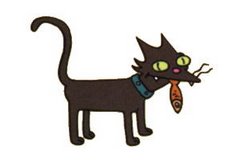Borden System Words: Saskatchewan
 The Borden System divides Canada up into chunks based on the lat/long system to provide a handy way of designating unique site names based on the site's location and the order in which it was found (just like the Stonecutters!). It was created by one Charles E. Borden in 1952, while teaching at UBC. Borden is known as the grandfather of BC archaeology. This is despite the mild handicaps of having been employed in the German Department (although he was made a lecturer in archaeology after his first 10 years there) and being an American citizen. See a good bio from the CAA here, also American Antiquity printed an obituary for him. His contributions to BC archaeology (and archaeology in general) were numerous. Among other things, he excavated many important sites, was instrumetal in the pressuring of provincial government to pass the 1960 Archaeological an Historic Sites Protection Act, and of course developed the Borden Grid System which all Canadian archaeologists know and enjoy today.
The Borden System divides Canada up into chunks based on the lat/long system to provide a handy way of designating unique site names based on the site's location and the order in which it was found (just like the Stonecutters!). It was created by one Charles E. Borden in 1952, while teaching at UBC. Borden is known as the grandfather of BC archaeology. This is despite the mild handicaps of having been employed in the German Department (although he was made a lecturer in archaeology after his first 10 years there) and being an American citizen. See a good bio from the CAA here, also American Antiquity printed an obituary for him. His contributions to BC archaeology (and archaeology in general) were numerous. Among other things, he excavated many important sites, was instrumetal in the pressuring of provincial government to pass the 1960 Archaeological an Historic Sites Protection Act, and of course developed the Borden Grid System which all Canadian archaeologists know and enjoy today.
Let's look at how it works shall we? Say we have the site FfNm-1 (that's South Branch House).
"F" is the Major South-North locator. Each North-South block represents 2 degrees of Latitude going from "A" through "U" (no V through Z). While "f" is the Minor South-North locator (the minor blocks for "F" range from "a" through "l"). For both the North-South and East-West, each minor block within a major block represents 10 minutes of latitude or longitude respectively. from south to north (a-l). "N" is the Major East-West Locator. To the South of 62 degrees, each of these blocks represents 4 degrees of Longitude from east to west (A - W). However, North of 62 degrees each major block represents 8 degrees of longitude. FYI: Because the distance between lines of longitude get smaller with increasing latitude, the Borden System changes at 64 degrees north latitude, from a width of 4 degrees of longitude to a width of 8 degrees in order to keep the area within each designate roughly the same. Lastly, "m" is the Minor East-West Locator, each block represents 10 minutes of Longitude from east to west (a - x). North of 62 degrees each minor block represents 20 minutes of longitude. The full Borden designation, FfNm-1, represents a roughly 16km x 16km area and the 1st site found within that area. Upper Borden grid maps are downloadable at the Canadian Museum of Civilization here.
So, Saskatchewan (see the upper Borden grid to the right, click to embiggen) includes these Borden letters:
North/South - D(g-l), E(a-l), F(a-l), G(a-l), H(a-l), I(a-l)
East/West - O(a-l), N(a-x), and M(k-x).
With quick use of a scrabble cheating device (here), I found that the following 51 words can be spelled using the Borden system in Saskatchewan:
dims, dine, ding, dink, dins, dint, diol, elms, fane, fang, fano, fans, fems, fend, fens, feod, find, fine, fink, fino, fins, floc, floe, flog, gamp, gams, gane, gang, gaol, gems, gene, gens, gent, genu, gimp, gink, gins, glob, hams, hand, hang, hank, hant, hemp, hems, hens, hent, hind, hins, hint, idol
I guess "dink" is kinda dirty and "gink" is a slang word for a person or fellow that is often used in a derogatory context. Also, a "gamp" is an umbrella. It's not dirty, I just didn't know that before. Anyway, as it stands Saskatchewan is clean as a bean. You win this round Charles! Nonetheless, I remain undaunted in my task and will continue to scour Canada province by province for giggle worthy words!
p.s. I wonder if french words count if they're in Quebec.














.jpg)



















